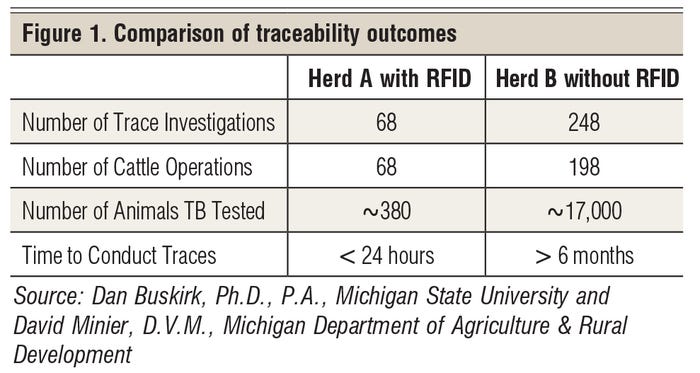Here’s what the beef business can learn about traceability from the COVID-19 crisis.
April 29, 2020

Editor’s Note—Occasionally, BEEF will use this space for a guest blog. Such is the case now with this blog on traceability. Enjoy.
Keeping track of cattle that do not fall under USDA’s mandatory animal disease traceability requirement is not easy. The saying about herding cats? Yeah. It’s kind of like that but I just keep losing them.
I work for the Texas Cattle Feeders Association (TCFA), and all things cattle traceability have found their way to my desk. In October 2018, TCFA launched the Texas Traceability Pilot. The goal was to work through the logistics of voluntary disease traceability. The Pilot has over 97,000 cattle enrolled and will come to an end this year.
The challenge we face in recording movements of those animals is not the fault of anyone who is voluntarily participating in the Pilot. It’s the result of the cattle supply chain’s lack of ability to easily and quickly record individual animals without posing a burden to the speed of commerce at various segments.
Related: BEEF survey--Here's why BEEF readers support disease traceability
But we’re working on it, and after a lot of trial and error, we think we’ve found the right system to facilitate a nationally significant, voluntary disease traceability network. It’s called U.S. CattleTrace.
U.S. CattleTrace began as a Kansas disease traceability pilot, called CattleTrace. It includes partners like Kansas Livestock Association and others in Kansas, Missouri, Oklahoma, Kentucky, Oregon and Washington.
CattleTrace checks all the right boxes:
Voluntary: Encourages producer participation on a voluntary basis
Automated: Supports hands-free technology that automatically sends info to the database
Producer-led: Receives direction from a board of directors comprised of producers from various segments of the cattle industry
Private: Collects minimal data points from readers, not including ownership info, in a privately held database
Traceable: Grants access to animal health officials based on the severity of the disease
In January, TCFA, Texas and Southwestern Cattle Raisers Association, Florida Cattlemen’s Association and Kentucky Cattlemen’s Association decided to collaborate with CattleTrace, and together we launched U.S. CattleTrace.
We all had different opinions about cattle disease traceability, but at the end of the day, we chose to align and strengthen our efforts to advance disease traceability.
READ: Myths and facts about cattle disease traceability
The reality is the cattle industry is just one serious disease outbreak event from devastation. Even now, with the coronavirus pandemic causing mass disruptions to our local economies and daily lives, imagine what the cattle market would look like if all export market access was instantly cut off again – if the “shelter in place” orders were instead movement restrictions on infected herds and herds under investigation across the nation.
Think about the number of counties COVID-19 has reached. Now imagine if that number of counties was instead measuring the spread of foot and mouth disease.
Prompted by an outbreak of bovine tuberculosis (TB), Michigan was the first state to implement a mandatory cattle traceability program in 2007. They created the following comparison of two TB infected herds with similar animal movements:

Both herds had around 1,000 animals come and leave in the past five years. Herd A with RFID tags had 68 trace investigations involving 68 different cattle operations. Around 380 animals were TB tested and the total time to trace those animals was around 24 hours.
Herd B, which didn’t have RFID tags, took 248 trace investigations involving 198 different cattle operations. Around 17,000 animals had to be TB tested and the total time to trace those animals was around 6 months.
The numbers speak for themselves. Social distancing won’t work to minimize the spread of a highly contagious disease in the U.S. beef herd, but having a voluntary, producer-directed, nationally significant disease traceability system, like U.S. CattleTrace, in place will.
NOTE: Bovine coronavirus is not the same strain as the novel coronavirus disease, COVID-19. The U.S. Centers for Disease Control and Prevention (CDC) has not received any reports of livestock becoming sick with COVID-19 in the United States. Read more from the Texas Animal Health Commission here.
Savanna Barksdale is the government relations coordinator for the Texas Cattle Feeders Association. The opinions of the author are not necessarily those of beefmagazine.com or Farm Progress.
You May Also Like



